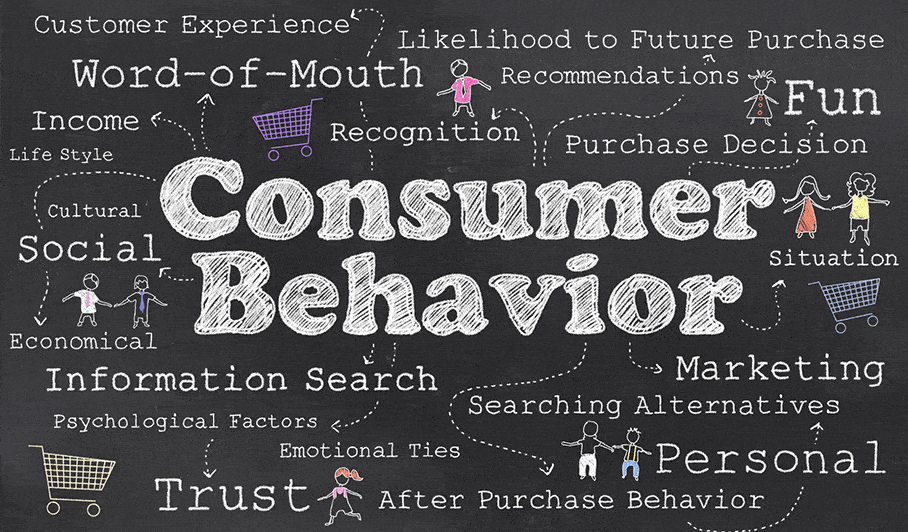If Aussie business owners want to survive Amazon, they need to understand how user experience predicts consumer buying behaviour.
Before they’re anything, your customers are visitors to your website. They haven’t run across your product in a store, they haven’t found it on another site they’ve already used: they’ve come to you because something about your website looks promising.
If they decide not to shop with you afterwards, the only explanation is that something went wrong on your website. But what could that have been?
Here are a few UX tips you can learn from Amazon, one of the most successful companies in the eCommerce business.
Speed Changes Consumer Buying Behavior
If your website takes a long time to load and your users aren’t interested in waiting, they’ll go somewhere else.
That’s something we’ve known about the internet for a long time. But we haven’t known just how severely speed impacts the behaviour of your customers.
Walmart has suffered quite a bit in the United States due to Amazon: online shopping at first meant the famous one-stop shop was a drive away and not a click. Even after getting online, Walmart still struggled to influence consumer buying behaviour in a meaningful way.
Part of the problem was performance. And so, Walmart decided to play around with offering different speeds to different users, at random and for the purpose of their tests.
What they found was shocking: a 2 percent increase in ROI for every one second their speed improved.
What’s even more shocking is just how quickly users grow tired of waiting.
How long would you think customers need to wait before going somewhere else?
Twenty seconds? Fifteen? Ten?
The answer is three. After three seconds of loading screens and spinning wheels, your web visitors have decided they’re no longer interested in waiting and would rather go elsewhere.
The importance of web speed is actually one of the reasons cutting edge web development is a priority for us.
It doesn’t matter how good your product is. If people hit the backspace button when they click on your website, they certainly won’t be buying it. So make sure your site runs well. Your business will follow.
Listen to Customers
A very common element of shopping online is an almost surreal feeling of being listened to and ignored at the same time.
It usually goes something like this. You have a bad experience and submit a complaint to the website. You might not hear back for weeks, and when you do it’s from someone who seems more likely to have simply read the subject of your complaint than the content.
After hearing back for the first time, the case is usually closed.
Is there anything more frustrating than this?
Customers or otherwise, human beings are social creatures. They have a need to feel listened to, and either outright ignoring them or pretending to listen without doing anything is a way to alienate existing customers, let alone drive away potential customers.
One of the ways Amazon has been incredibly successful is by creating an environment which privileges customer service and makes visitors and complainants feel valued at every step of the process.
On Amazon’s many devices, for example, they provide something known as “The Mayday Button”. This button provides service to customers in the form of real-time tech advice and support delivered right to your phone, laptop, or tablet. Think of it as a digital trip to Apple’s genius bar.
Even ignoring Amazon’s devices and focusing exclusively on their actions as an eCommerce platform, they do quite a bit to make customers feel genuinely valued.
For instance, Amazon CEO Jeff Bezos makes his email address publicly available to web visitors.
Admittedly, this is likely a publicity stunt in which Bezos either puts the bulk of emails sent to him in a blank folder or handles the majority of his business dealings from another. But whether Bezos’ involvement with day-to-day shoppers is fact-or-fiction, what’s more important is the message this sends.
Jeff Bezos influences consumer buying behaviour in one of the easiest ways possible. He puts his hand on the shoulder of customers, looks them in the eye, and tells them he feels their pain and wants to fix it.
If he can do it, so can you. In fact, the importance of making your customers feel heard and listened to is something we take very seriously through providing world-class support to our customers.
Recommendations
Since conversations about consumer buying behavior are conversations about people, there’s one more thing you might not have considered.
People have a wide variety of needs, and most of your customers are in the market for more than one thing.
Recommending different products to customers based on previous interest is a great way to get people to buy new things. And oftentimes it can be done without feeling intrusive or excessive.
For example, let’s say you have a customer named Kyle. Kyle visited your store once, and he did it to buy hiking boots and bug spray.
You probably don’t want to suggest Kyle buy a surfboard or hunting gear.
But recommending that he buy other hiking equipment, like a backpack or a travel bottle, would be very smart. That’s because suggestions should be an exercise in showing how effective you are at predicting consumer buying behavior.
Amazon has been successful with this, and with the growth in tracking and analytics as its own industry, it is now the case that many other business owners can be successful as well.
Conclusion
Amazon coming to Australia isn’t going to be easy. But the sky is not falling, at least not for smart business owners.
We’re great at helping people with their eCommerce concerns, and that’s going to be more important than ever today. Get in touch with us, so we can help you navigate these difficult times for Aussie business owners.



